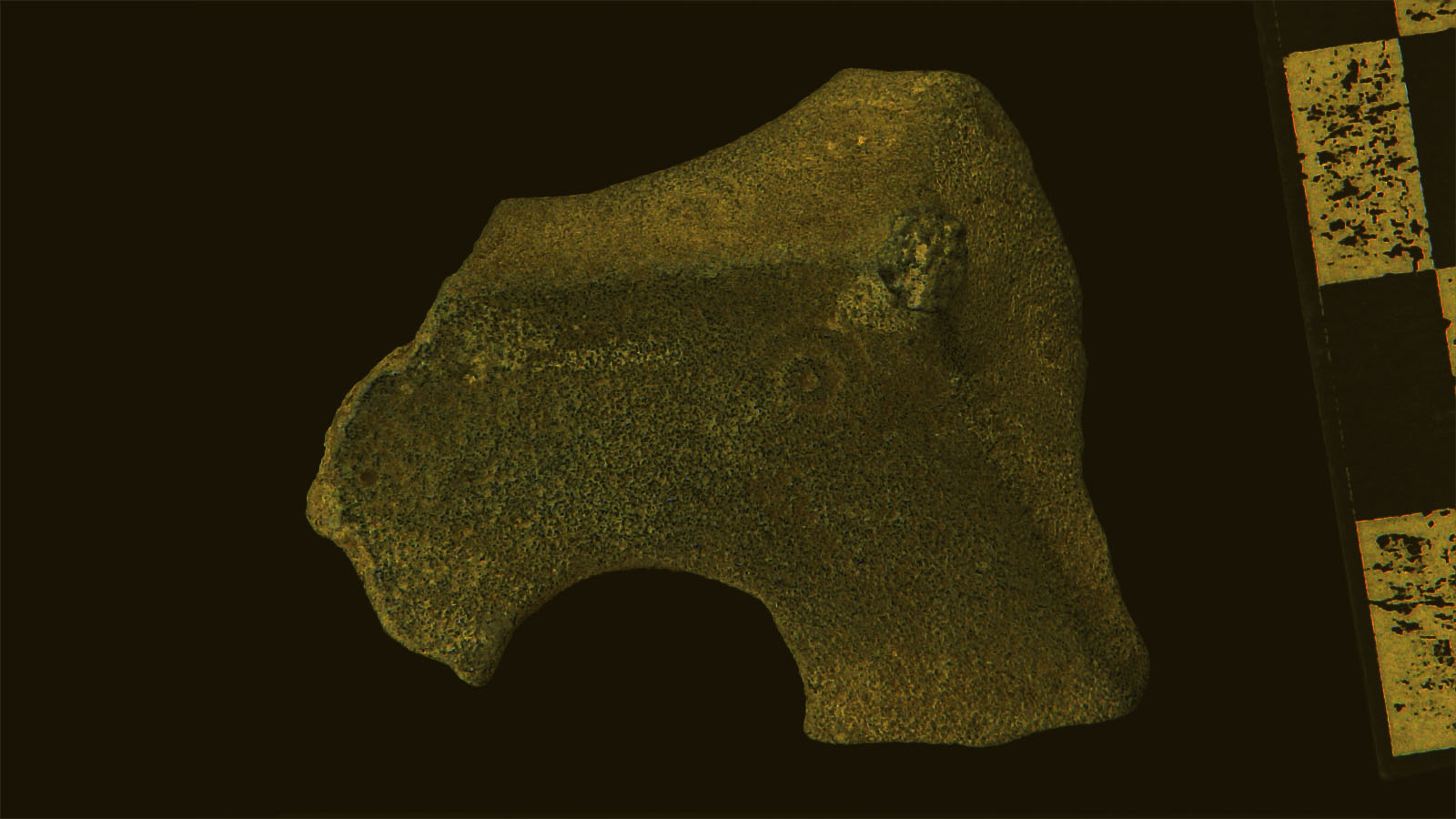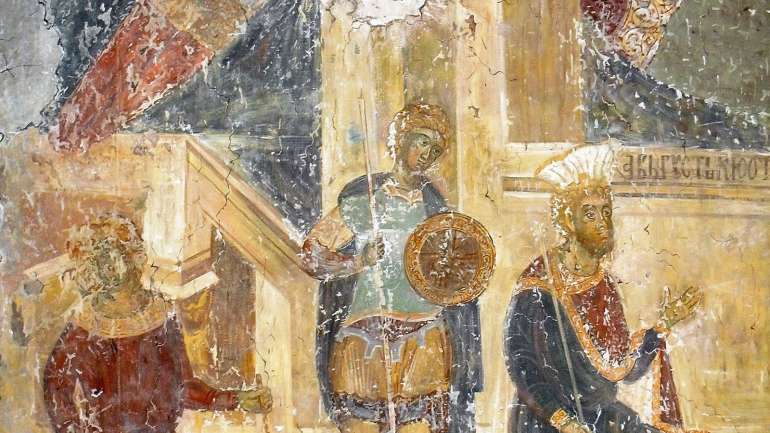By Smiljana Dodić, museum counselor
A significant part of the Collection of Greek and Roman Antiquites in the Regional Museum of Jagodina consists of fragmented metal objects, mostly acquired through donation during the last thirty years. The former curator of the collection Radovan Petrović dedicated himself to them, studied them, preserved them and exhibited them on several occasions. In the endless pile of fragmented ancient bronze, he discovered numerous types of various fibulae and other jewelry, warrior equipment and horse harness and cultic objects.
A small angular part of a metal object published in the catalog of the exhibition Messages of the Upper Moesia did not miss the experienced eye of Professor Miroslav Vujović from the Department of Archeology at the Faculty of Philosophy in Belgrade. In only a 3.5 cm long piece of ancient metal discovered in the in the village Deonica 7 km westward from Jagodina in central Serbia, prof. Vujović recognized a mystical object that has been attracting the attention of archaeologists, astronomers, mathematicians, and even philosophers for three centuries, and which is completely unusual for this region. Due to researches of Professor Vujović, this accidental find made of copper alloy similar to brass could be reconstructed and partly determined which we hereby convey to the general public.
The item represents the angular part of the hollow cast regular twelve-sided polyhedron – dodecahedron (δωδεκάεδρον), the most perfect of Plato’s five bodies, which had circular openings and ornaments in the form of concentric circles on pentagonal sides – “eyelet”. Remains of such penetrations of different diameters and the “eyelet” ornament are noticeable on three partially preserved surfaces of our object, and damage to the only preserved corner indicates a broken part in the form of a ball or mushroom-shaped extension. Although fragmented, this object could be reconstructed thanks to numerous analogies discovered within military camps, necropolises, rustic villas, thermal facilities and sanctuaries throughout the western provinces of the Roman Empire.
The first example of such a dodecahedron was presented to members of The Society of Antiquaries in London in 1739, and to date a total of 116 specimens of varying degrees of preservation have been discovered. All of them are made of copper alloy, except the only one specimen made of silver. Their dimensions vary – height from 4 to 11 cm, weight from 35 to 580 g, and even up to 1 kg, while the diameters of the openings are shorter from 6 mm to 4 cm. They were found mostly in the Roman provinces north of the Alps (Gaul, Britain, Germany), only one in the Upper Pannonian Danube, and they are not found in Italy, Greece, Asia Minor or North Africa. The northernmost specimen was found near Hadrian’s Wall in Britain, the southernmost in Arles, so many consider them objects of Celtic tradition and call them Galo- Roman dodecahedrons. The significance of our dodecahedron specimen is all the greater because it represents the easternmost example of the findings of this type of object so far.
These finds are dated to the period of the 2nd / 3rd century, and the question of their purpose has not been reliably determined to this day. They were interpreted differently, first as mace heads (which is completely rejected today), then candlesticks, measuring instruments, but also as parts of a play set, a tool for knitting gloves, decorative or cult objects.
Professor Vujović opts for two, the most acceptable interpretations of the function of these objects: either a geodetic instrument – dioptron – for optical distance measurement, or a calendar – astronomical instrument intended to determine the optimal time for sowing crops.
At last, in a philosophical sense, the dodecahedron represents the most perfect of Plato’s five bodies, regular polyhedra symbolizing the five elements of which nature is made: fire (pyramid), earth (cube), air (octahedron), water (icosahedron) and, above all, , the universe or cosmic spirit (dodecahedron). Therefore, this perfect geometric form could be exempted from the materialist interpretation of its function, and interpretated as the subject of one of the mystical – hermetic cults with a symbolic representation of the Universe.
More on the link.







